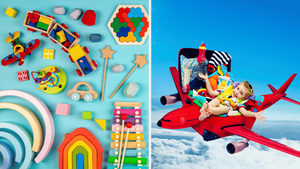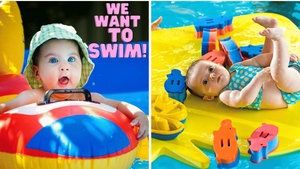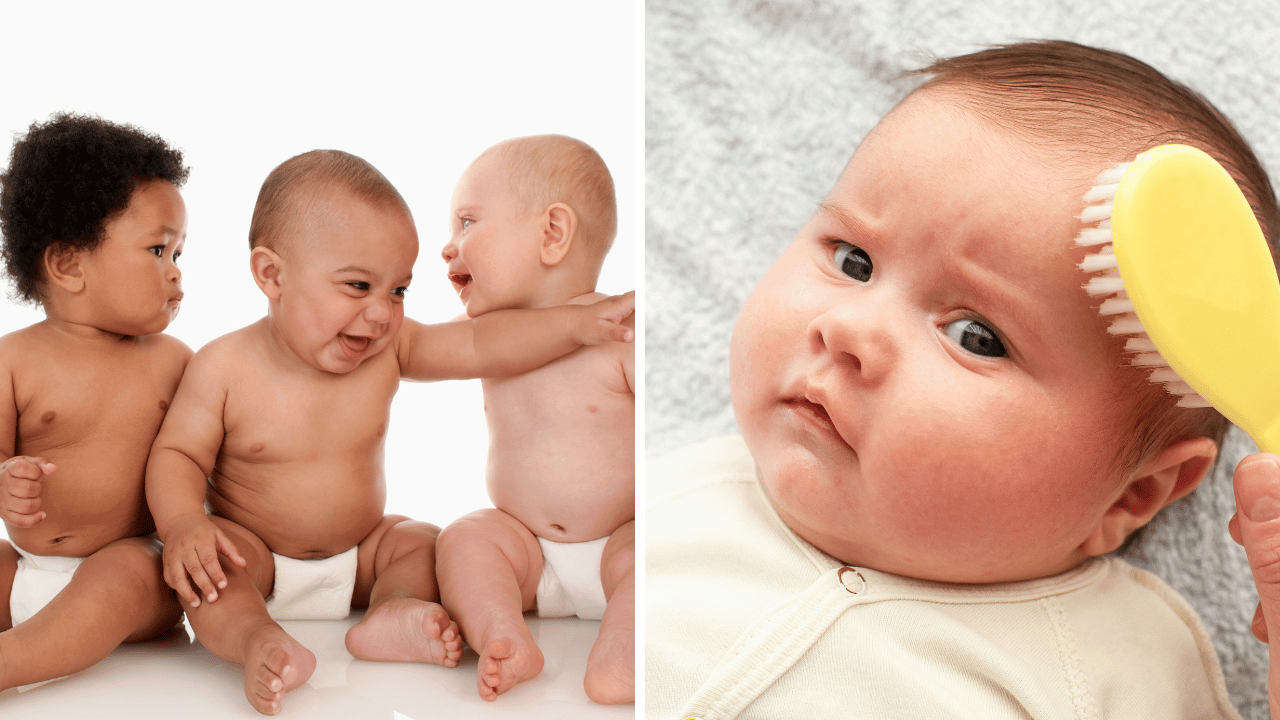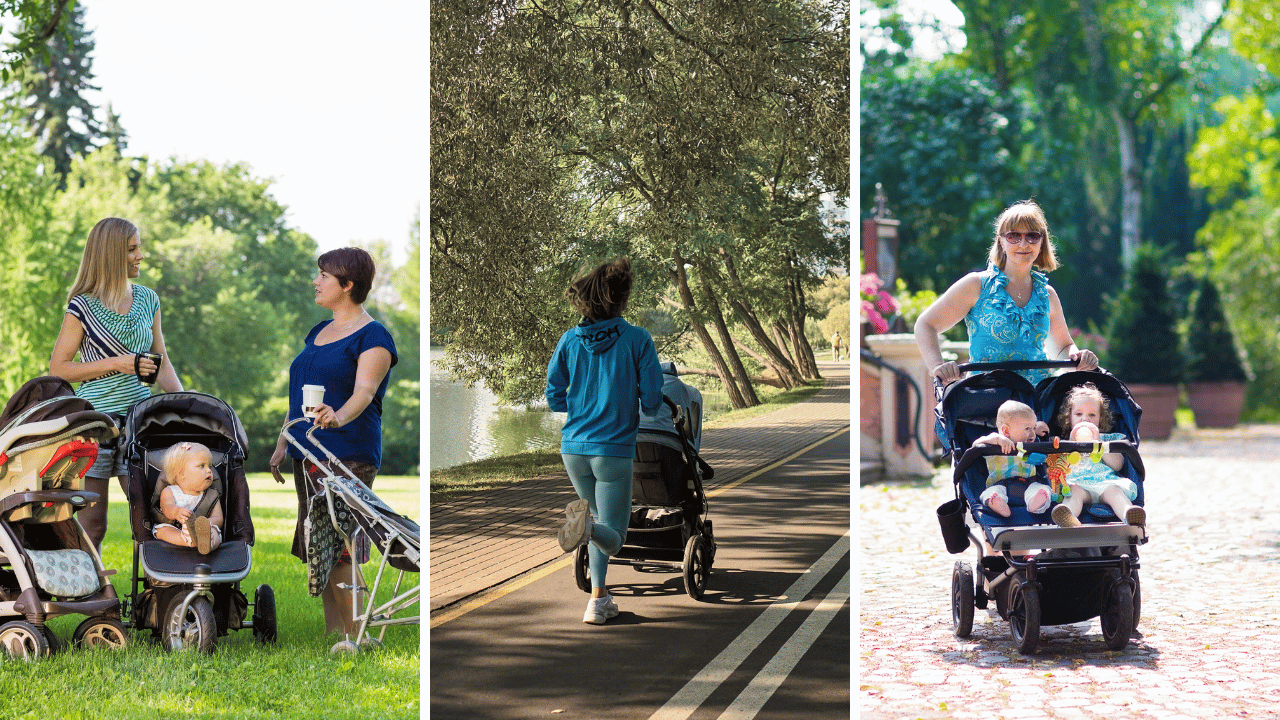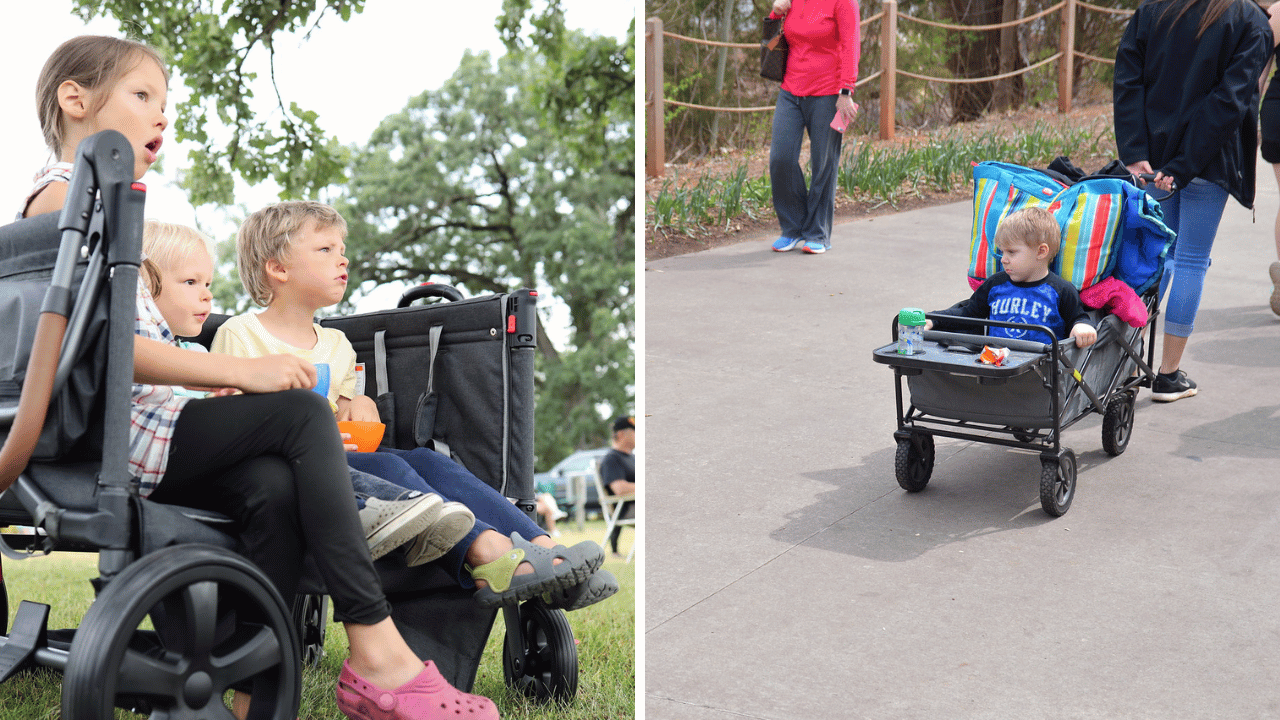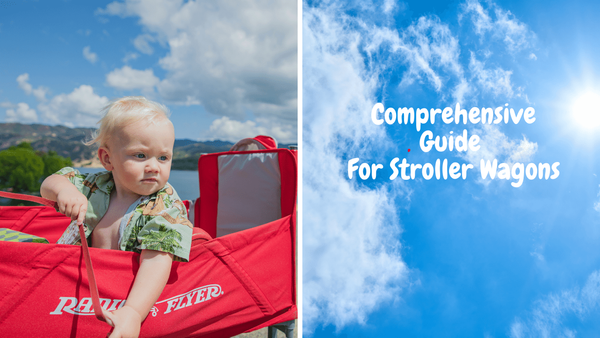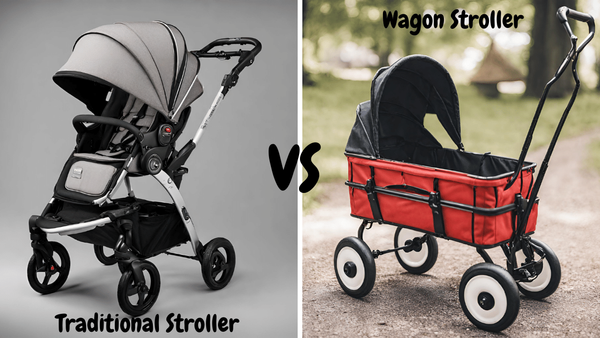Navigating the process of parenting can be both a joy and a challenge. As babies grow, so do their needs and as they develop, parents must consider what is best for their child in different circumstances. One common source of confusion is determining when it is safe to have your baby sit facing forward in a stroller rather than facing you while you’re out and about – this blog post seeks to answer that very question.
We’ll explore the safety considerations related to front-facing strollers, look at suggested age guidelines from trusted sources, get tips on how to ensure your baby is safe when using them going forward and more. Read on for all the details and make sure you know how soon it's okay to put your little one in an exciting front-facing ride.
When Can Baby Sit In A Front-Facing Stroller?
Here are a few guidelines that you should consider when it comes to deciding when your baby is ready for a front-facing stroller ride:
• The American Academy of Pediatrics (AAP) recommends that babies are at least 6 months old before they start riding in a forward-facing stroller.
• Make sure your baby has developed good head control and can sit up independently before attempting to use a stroller with them facing forward.
• Babies should not be placed in front-facing strollers if they are showing signs of discomfort or fatigue.
The Great Debate: Rear-Facing vs. Front-Facing Strollers
It's essential to understand that the safety of a stroller doesn't only depend on its type but also on how it's used. One hot topic among parents is the appropriate age for babies to begin using a front-facing stroller.
Research suggests that until about six months, babies lack the neck strength to hold up their heads independently. Therefore, it's recommended to use a rear-facing stroller during this period as it offers better support.
Once your baby can sit up unaided and has good neck control – usually around 6-9 months – you can safely switch to a front-facing stroller. However, remember that every child develops at their own pace, so it's crucial to observe your baby's readiness before making the switch.

Safety Guidelines and Legal Regulations
International safety guidelines advise parents to use a stroller suitable for their child's age, weight, and developmental stage. The Juvenile Products Manufacturers Association (JPMA) provides a certification program that reassures parents about the safety of a product.
In some regions, there are legal regulations regarding the use of strollers. For instance, in certain areas, children under the age of one must be in a rear-facing stroller. Always check your local laws to ensure compliance.
Safety Considerations For Front Facing StrollersWhen considering the safety of your baby riding in a front-facing stroller, there are several important factors you should consider:
• Always use the harness and straps in a front-facing stroller, just as you would with a rear-facing stroller. Make sure the straps are snug and your baby is secure so they cannot slide out of the stroller.
• If you're using a stroller with a seatbelt, make sure it's properly adjusted and fastened to ensure your baby is safely secured in the stroller.
• Make sure your baby's head is properly supported in a front-facing stroller.
• Avoid overloading the stroller with too many items or accessories as this can make it difficult to maneuver and increase the risk of tipping.
• Make sure you check the stroller regularly for any signs of wear or damage, as this can make it unsafe to use with your baby.
By following these safety guidelines, you can ensure that your little one is safe and comfortable while taking a ride in their front-facing stroller. With the right precautions, you can rest assured that they are in good hands while you're out and about.
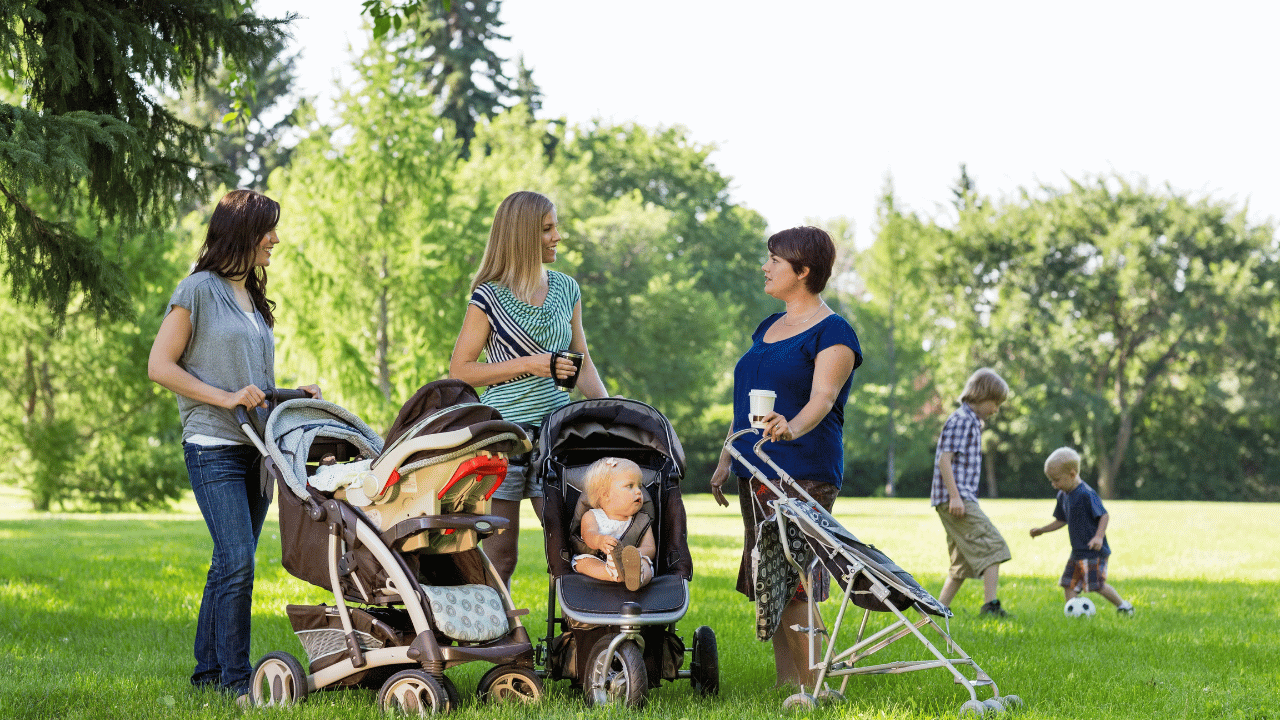
Understanding the Different Types of Strollers
Umbrella Strollers are lightweight and foldable, making them ideal for travel. However, they might lack the robustness and support needed for newborns.
Travel Systems combine an infant car seat with a stroller frame. They offer convenience but can be bulky and expensive.
Compact Strollers are small, lightweight, and easy to maneuver. They are great for city dwellers but may not offer as many features as larger models.
Jogging Strollers are designed for active parents. These strollers have superior suspension but are less compact and heavier than other models
Full-size Strollers offer many features such as a reclining seat, large sun canopy, and ample storage space. They provide maximum comfort but are bulkier and heavier.
Double and Triple Strollers are perfect for families with multiple young children. They are spacious but can be hard to maneuver because of their size.
Guidelines for Choosing a Safe and Suitable Stroller for Your Baby
When choosing a stroller for your baby, there are certain features that you should look for to ensure safety and comfort. Look for one with a sturdy frame, adjustable harnesses or straps, comfortable seat padding, good suspension and large pneumatic tires if necessary. Also ensure the stroller is equipped with brakes so it can be safely locked in place when not in use.
Finally, always read the manufacturer’s instructions carefully before using a stroller with your baby to make sure you are aware of all safety precautions.
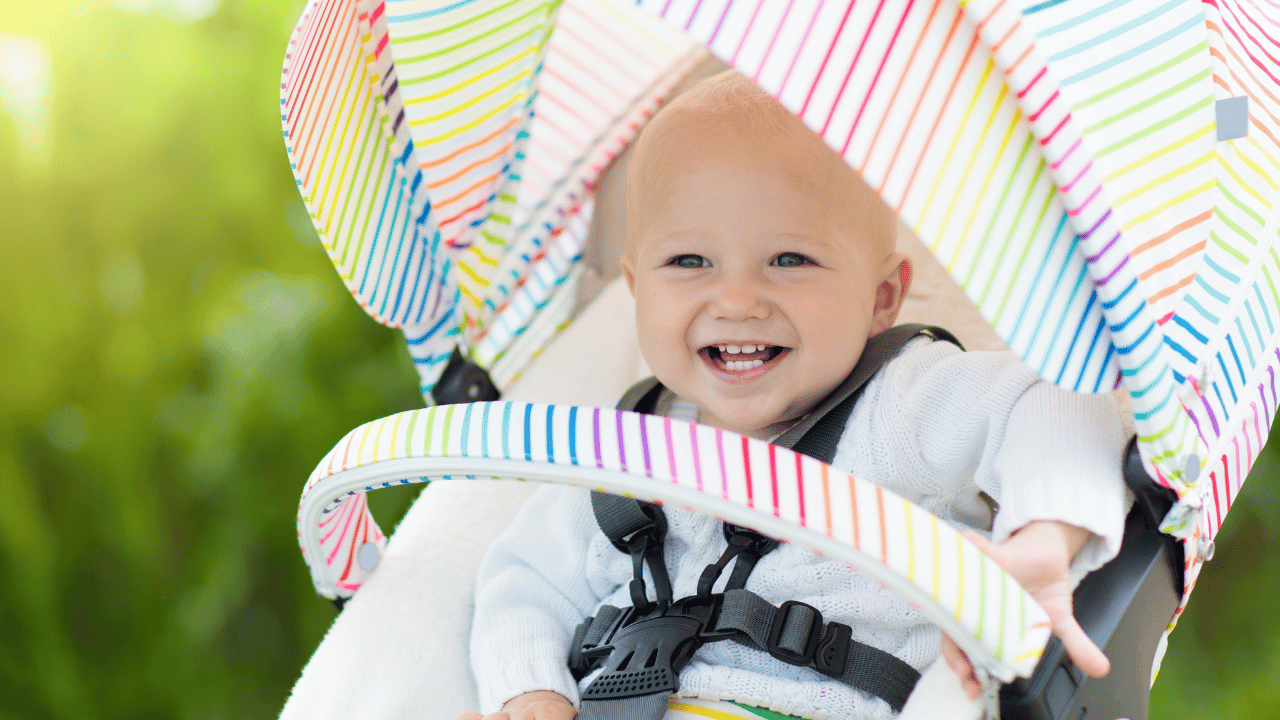
Tips for Using a Front-Facing Stroller Safely
- Always Buckle Up: Ensure your child is securely fastened in the stroller.
- Check the Brakes: Regularly inspect the brakes to ensure they're working correctly.
- Avoid Overloading: Don't hang heavy items on the handlebar as it can cause the stroller to tip over.
- Use the Safety Strap: When using a jogging stroller, always use the safety strap.
- Regular Maintenance: Keep your stroller in top condition by regularly cleaning and checking for any damages.
- Proper Support: Make sure baby's head is properly supported in the stroller. either by using a pillow or a padded headrest.
- Protection From Sun: Using your strollers' canopy will protect your baby's eyes and skin from harmful UV rays.
By considering these tips and guidelines, you can ensure your baby is safe and comfortable while taking a ride in their front-facing stroller.
How To Teach Your Baby Good Habits When Riding in Their Stroller
When it comes to teaching your baby good habits when riding in the stroller, the most important thing is to be consistent. Establish a set of rules that you expect them to follow such as always using their seatbelt and keeping their hands off the sides of the stroller. You can also use positive reinforcement by praising them for following the rules or giving them a special treat for good behavior.
Finally, it is important to be mindful of how you talk to your baby when they are in the stroller. Use a calm and patient voice to explain the rules and why they are important. This will help them learn quicker and can also be a great opportunity to bond and connect with your child.
When Is It Safe For Baby To Sit in a Front-Facing Stroller FAQ's
Are front-facing strollers safe for my baby?
Yes, front-facing strollers are safe provided your baby is developmentally ready to sit in one, and you follow all safety precautions such as always buckling up your baby and not overloading the stroller.
What are the benefits of a front-facing stroller?
Front-facing strollers allow your child to engage with their environment, fostering curiosity and learning. They also give parents better visibility of the path ahead.
What are the downsides to a front-facing stroller?
One downside is that you can't easily monitor your child's reactions or needs without stopping the stroller and moving around to the front.
Are there any legal regulations I need to be aware of?
Some regions may have laws regarding the use of strollers, including the age at which a child can be placed in a front-facing stroller. It's advisable to check local regulations to ensure compliance.
How can I ensure my baby's safety in a front-facing stroller?
Always secure your baby with the harness, avoid hanging heavy items on the handlebar, regularly check the brakes, and perform regular maintenance to keep your stroller in top condition.
Can newborns use a front-facing stroller?
Newborns should not use a front-facing stroller as they lack the neck strength to hold their heads up independently. A rear-facing stroller or travel system is recommended for newborns.
Does sitting in a front-facing stroller affect my baby's development?
There's no conclusive evidence to suggest that using a front-facing stroller negatively impacts a baby's development. However, it's essential to ensure your baby is developmentally ready before making the switch from a rear-facing to a front-facing stroller.
Are some types of strollers safer than others?
The safety of a stroller depends more on how it's used than on its type. Regardless of the kind of stroller, always follow the manufacturer's guidelines and safety tips to ensure your baby's safety.
Final Thoughts
In conclusion, determining when your baby can sit in a front-facing stroller is a multi-layered decision that requires a combination of elements to be considered. Make sure to follow the manufacturer's guidelines and safety tips, and ensure your baby is developmentally ready before making the switch.
Ultimately, a parent's intuition will likely be the most important factor when deciding if it's time to switch to a front-facing stroller. If you have any questions or concerns, always consult your baby's pediatrician for advice. With the right research and care, your little one can safely make the transition to a front-facing stroller in no time!



